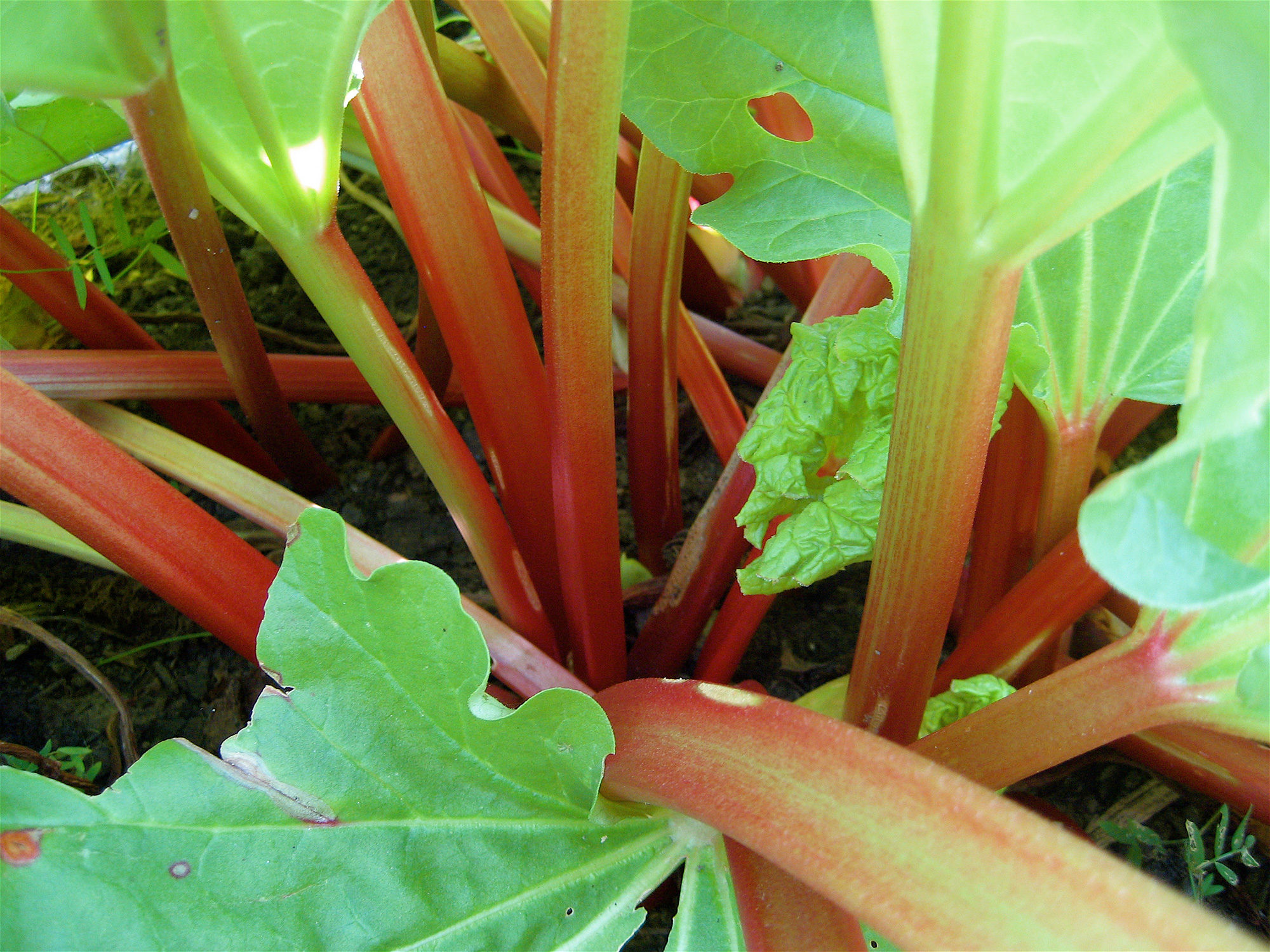Although the origins are unclear, rhubarb is probably a hybrid of R. rhaponticum and R. palmatum. These parents and several other species of Rheum have been grown in China and the Far East since at least 2700 B.C. and were used medicinally. The big, crinkly, heart-shaped leaves are showy enough for a prominent spot in the yard, but usually rhubarb is grown for the delicious red-tinted leafstalks that are used like fruit in pies and sauces.
Plant rhubarb in late winter or early spring. Look for root divisions with at least one bud and place them with the top of the division at soil level in a rich, well drained soil about 3 to 4 feet apart.
Harvest leafstalks for cooking in the spring to early summer. Grasp stalks near the base and pull sideways and outward (cutting with a knife will leave stubs that decay). Never remove all the leaves from a single plant. Stop harvesting when leafstalks begin to appear slender and remove any blossom stalks. Plants are often left to grow the first season without harvesting any stalks to allow for a larger, healthier plant.



